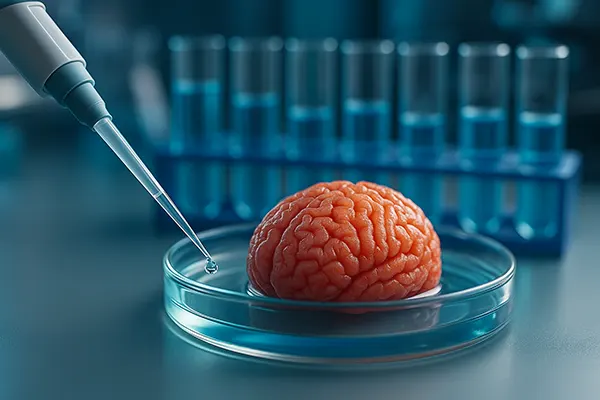
DNA as a Data Storage Medium: The First Startups Working with Biological Memory
In a world grappling with the exponential growth of digital data, scientists and entrepreneurs are looking to biology for answers. DNA, nature’s own information storage system, has emerged as a potential breakthrough for long-term, ultra-dense, and durable data archiving. In 2025, several pioneering startups are already developing viable DNA-based storage technologies, positioning themselves at the forefront of a new data revolution. This article explores how this biological leap is unfolding in the startup ecosystem and why the idea of storing data in DNA is becoming a serious contender for the future of digital memory.
The Concept of DNA Data Storage: Natural Efficiency
DNA storage relies on encoding binary data into the four-letter nucleotide sequence—A, T, C, and G—where each combination can represent information in an extremely compact form. The density of DNA is unmatched: one gram can theoretically hold over 200 petabytes of data. Additionally, DNA’s stability over millennia makes it a prime candidate for archival storage.
Unlike magnetic tapes or hard drives, which degrade in years or decades, DNA can retain its integrity for thousands of years if kept in cool, dry conditions. This characteristic has fascinated not only researchers but also venture capitalists funding early efforts to commercialise the technology.
With cloud storage costs rising and environmental concerns growing over energy-consuming data centres, the demand for sustainable, long-term data solutions is intensifying. DNA offers a biologically inspired solution that requires no electricity for maintenance once data is encoded.
Encoding and Reading: Where Science Meets Engineering
The process of encoding data into DNA involves converting digital bits into base pairs, then synthesising actual DNA strands representing that information. Reading this data back requires sequencing the DNA and decoding it to reconstruct the original digital file. Though technically complex, advancements in DNA synthesis and sequencing have made this process increasingly viable.
Companies such as Illumina and Oxford Nanopore have already revolutionised genome sequencing, indirectly supporting the DNA storage field. Modern synthesis techniques are also becoming faster and more cost-effective, reducing the economic barriers to entry for newcomers in this field.
Still, challenges remain. The process is relatively slow compared to traditional storage, and write/read cycles are expensive. However, startups are working to automate and scale these processes, targeting specific use cases like cold storage where retrieval speed is less critical.
Notable Startups in the DNA Storage Space
In the past few years, a growing number of startups have emerged, aiming to make DNA storage commercially practical. One of the most prominent is Catalog, a Boston-based company that has built a proprietary DNA writer called Shannon. Their focus lies in industrial-scale applications, where data like scientific records or legal archives require preservation over decades.
Another major player is DNA Script from Paris, which initially focused on healthcare but has since expanded into data storage. They’re developing enzymatic synthesis technologies, which may outperform traditional phosphoramidite methods in speed and scalability.
Twist Bioscience, though primarily a DNA synthesis company, collaborates with Microsoft Research on DNA storage prototypes. Their massive oligo library generation capabilities make them an indispensable part of the DNA storage ecosystem.
Investment and Commercial Interest in 2025
By mid-2025, the field of DNA data storage has attracted over $500 million in funding globally, with much of it channelled into infrastructure and R&D. Governments and defence agencies are particularly interested due to the archival potential and security implications of DNA-based memory.
Corporations are also paying close attention. Archival cloud providers, media organisations, and financial institutions are exploring pilot projects with DNA storage firms to test long-term reliability. Partnerships between universities, biotech firms, and data companies are flourishing.
Despite limited consumer-level applications for now, the investment ecosystem is optimistic. DNA storage is seen as a “moonshot” technology with the potential to become indispensable within the next decade.

Potential Applications and Ethical Questions
DNA storage is especially promising in areas that require stable, long-term archiving—such as national libraries, scientific datasets, and even digital art preservation. NASA and ESA have both shown interest in storing critical mission data in DNA formats for future space missions.
There’s also growing consideration of using DNA to encode culturally significant texts or records that could outlast civilisations. This idea isn’t just theoretical—some early projects have already encoded works like Shakespeare’s sonnets and the Universal Declaration of Human Rights into DNA samples.
However, using DNA raises ethical questions, especially around synthetic biology. Critics warn of possible misuse if biological data and human genetic information ever intersect improperly. Safeguards, regulatory frameworks, and transparency will be essential as the technology evolves.
Outlook: A Long Road with Immense Potential
Experts agree that widespread adoption of DNA storage won’t happen overnight. The technology still needs to overcome bottlenecks in cost, speed, and infrastructure. However, the trajectory is clear: as digital data continues to explode and traditional media age poorly, biological solutions will become increasingly appealing.
Educational institutions are also beginning to include DNA data storage in their curricula, training future engineers and data scientists for a hybrid discipline combining informatics and genomics. This intersection is already spawning new careers and interdisciplinary research fields.
In short, while 2025 marks only the beginning of DNA-based data archiving, the foundation laid by today’s startups could change the face of memory technology in the decades to come.
Popular articles
-
 Why Modern Technologies Are Becoming More ...
Why Modern Technologies Are Becoming More ...Modern technologies are developing at a pace that few users can fully …
Learn more -
 Next-Generation Home Batteries: Hybrid Ene...
Next-Generation Home Batteries: Hybrid Ene...Hybrid home batteries have become a practical foundation for residential energy autonomy …
Learn more -
 How Artificial Intelligence Transforms Hom...
How Artificial Intelligence Transforms Hom...By 2025, artificial intelligence has become a central component of modern home …
Learn more
